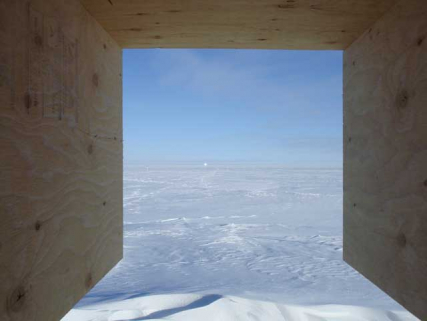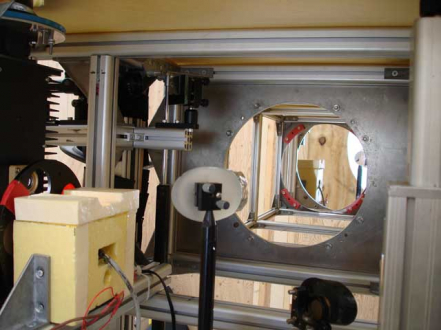Jochen Stutz, a professor at UCLA, has brought his telescope to Summit to analyze gases. In a simplistic way it first looks like a Newtonian telescope with a primary mirror at the end and a secondary mirror near the eyepiece. But then you look closer and it has a Xenon arc lamp that sends a parallel light beam 2 km and 5 km to a corner cube reflector made of quartz glass. When that beam of light is reflected back to the telescope, it is picked up by a quartz fiber which transfers the light to a spectrometer with a diffraction grating.
Notice the bright pinpoint light. That is the reflector.
The spectrometer is measuring wavelengths from 250-550 nanometers (nm), which is the range going from the UV (invisible) to visible green wavelengths. The instrument is basically observing air or taking a picture of the atmosphere and the spectrometer is analyzing for composition of the air.

Looking towards the primary mirror
The natural light that is detected by the instrument is subtracted from the lamp light to get a more accurate reading. The absorption spectrum that is detected by the spectrometer is then matched with known spectra of gases to identify them and to quantify their levels at Summit.

Looking through scope toward the spectrometer.
Gases that are being detected are ozone, sulfur dioxide, nitrogen dioxide, HONO, and a trace of bromine oxide. The data from this instrument along with the data from the other instruments that the photochemistry scientists are collecting will give us a better picture of the air composition at Summit.
The DOAS Telescope has also been used in large cities to observe the gases in air, much more polluted air.


Comments